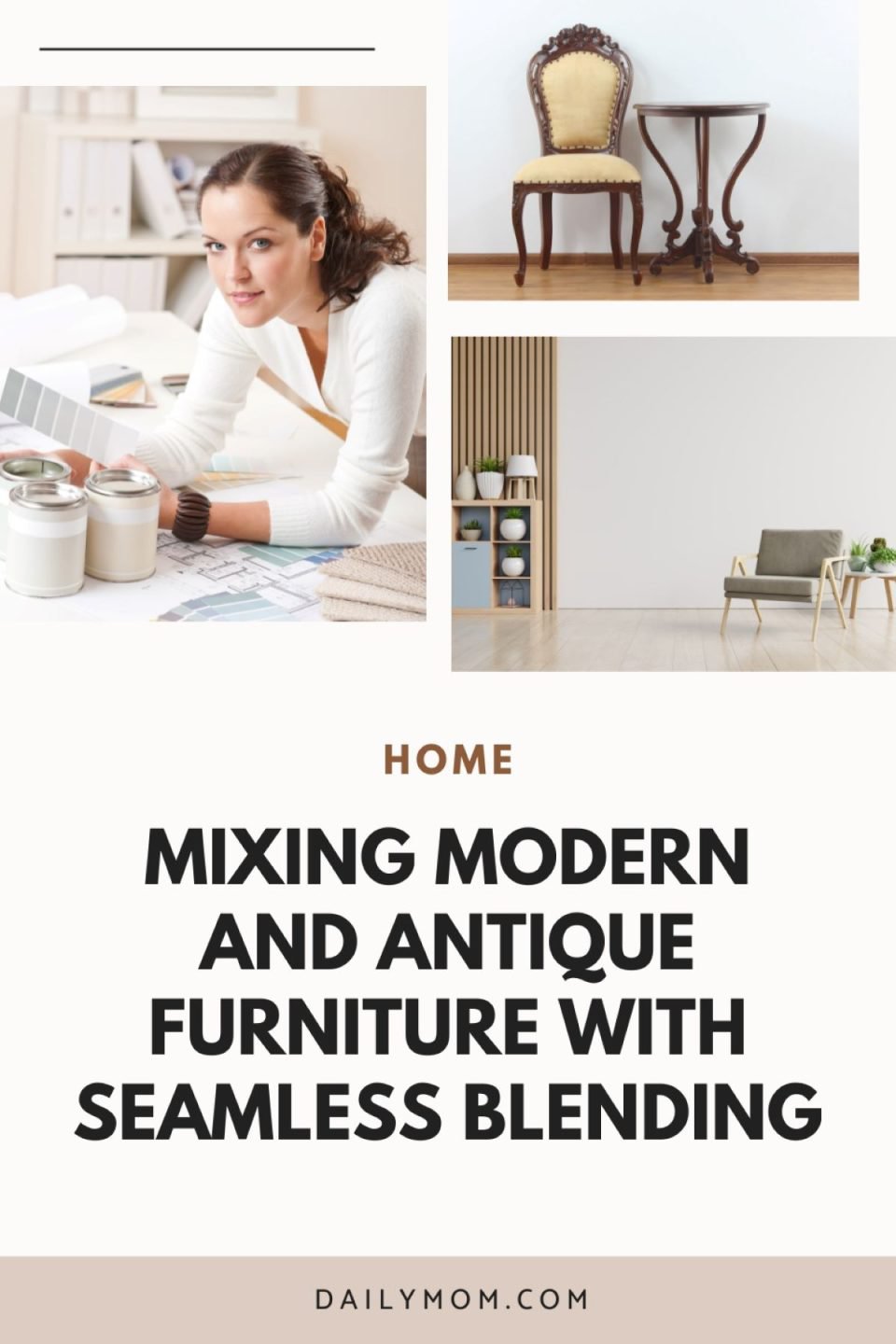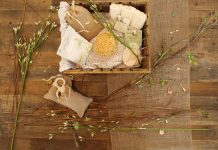The allure of blending modern and antique furniture transcends mere interior decoration. It’s an artistic expression, a blending of contrasting eras and styles that transforms a living space into something truly unique. Sleek, contemporary lines seamlessly coexist with the timeless elegance of antique pieces—a juxtaposition that sparks intrigue and captivates the eye.
Blending modern and antique furniture is a trending fusion. There are characteristics that define each style, and benefits to harmonizing the past and present in your home. Whether you’re an interior design enthusiast, a history lover, or someone on a mission to create an eco-friendly living space, mixing modern and antique furniture is a delightful way to create spaces that are not just visually stunning but also brimming with stories and character.
Let’s begin by understanding the essence of modern and antique furniture and the historical context that shapes them.

Understanding Modern and Antique Furniture
When blending modern and antique furniture, it’s essential to grasp the fundamental characteristics of each style and understand the historical context that has shaped them into what they are today. Here, we dissect the core elements that define modern and antique furniture, offering a foundation for your design journey.
Characteristics of Modern Furniture
Modern furniture, often referred to as contemporary furniture, embodies the essence of the present and future. Here are some key characteristics:
- Clean Lines and Minimalism: Modern furniture is renowned for its clean, sleek lines and minimalistic designs. It values function and simplicity.
- Materials: Common materials include glass, metal, and a variety of engineered woods. These materials are often combined to create striking visual contrasts.
- Neutral Color Palettes: Modern pieces typically feature neutral color palettes, with occasional bold accents.
- Functionality: Modern furniture prioritizes practicality and usability. Multi-purpose and space-saving designs are common.
Characteristics of Antique Furniture
Antique furniture takes us on a journey back in time, offering a glimpse into the craftsmanship and aesthetics of bygone eras. Key characteristics include:
- Ornate Details: Antique pieces are renowned for their intricate details, carving, and embellishments. These details tell stories of the past.
- Quality Materials: Antiques are often crafted from solid wood, such as oak, mahogany, or cherry. These materials contribute to their longevity.
- Rich Color Palettes: Antique furniture exhibits a wide range of colors, from deep, warm tones to subtle pastels, influenced by the styles of their respective periods.
- Unique Styles: Different historical periods have produced distinctive styles, such as Baroque, Victorian, or Art Deco. Each style reflects the design ethos of its time.
Historical Context and Styles
Understanding the historical context of furniture styles also contributes to understanding how to blend different eras. For instance:
- Baroque: Characterized by opulence, dramatic shapes, and intricate detailing, Baroque furniture hails from the 17th century.
- Victorian: The Victorian era, spanning the 19th century, saw furniture with ornate designs, inspired by nature and romance.
- Art Deco: Emerging in the 1920s and 1930s, Art Deco furniture features geometric shapes, bold contrasts, and a sense of glamour.
By comprehending the unique attributes of modern and antique furniture, as well as their historical significance, you’re better equipped to design blends that harmonize these two worlds.
Read More: Puzzle-Piecing Furniture: Making the Perfect Space with What You Have
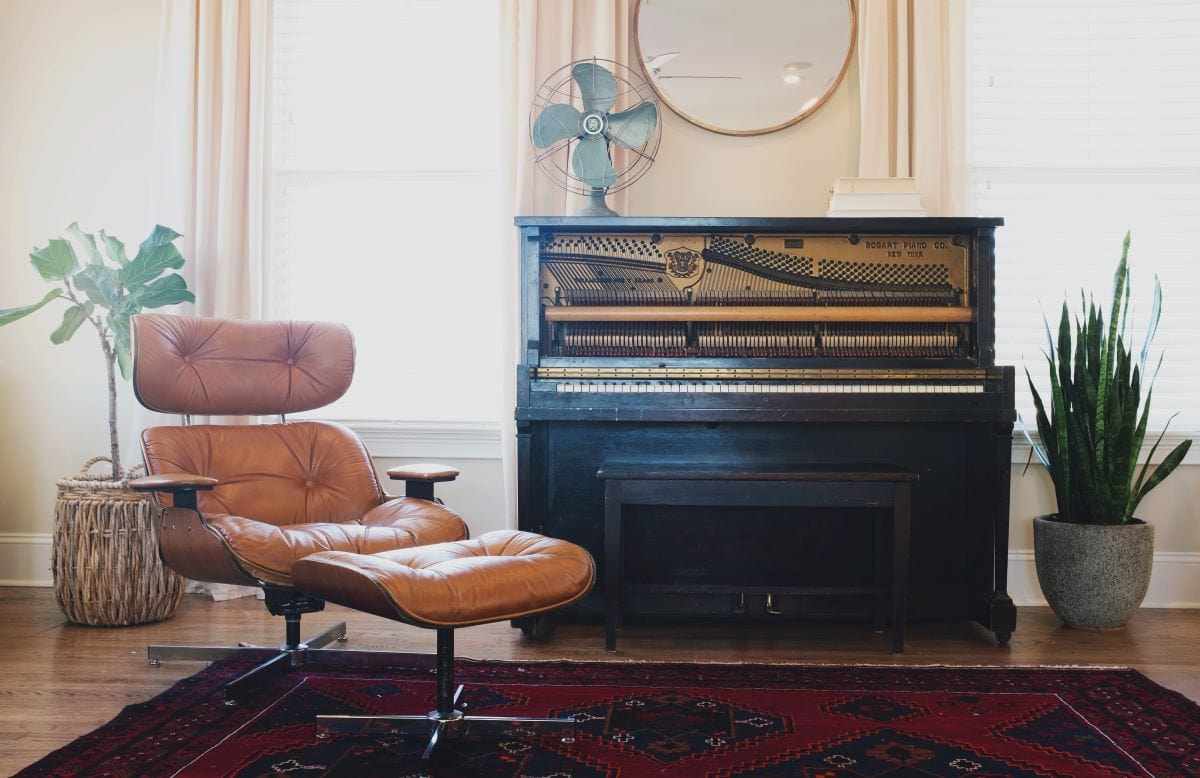
Benefits of Mixing Modern and Antique Furniture
The decision to blend modern and antique furniture in your home isn’t just about aesthetics; it’s a choice that offers other advantages. From creating a distinctive and eclectic ambiance to championing sustainability, there are plenty of highly compelling reasons why this design approach is gaining popularity.
Creating a Unique and Eclectic Style
One of the most alluring aspects of mixing modern and antique furniture is the opportunity to craft a space that is uniquely yours. Here’s why:
- Personal Expression: This design approach allows you to showcase your individuality and tastes, breaking free from cookie-cutter interior trends.
- Visual Intrigue: The juxtaposition of contrasting styles sparks visual interest and curiosity, making your living spaces conversation starters.
- Dynamic Spaces: Combining eras and designs adds dynamism to your interiors, ensuring that no room feels static or predictable.
Preserving and Showcasing History
Antique furniture carries with it a rich history and stories from the past. Here’s how blending it with modern pieces celebrates heritage:
- Historical Significance: Antique furniture often represents craftsmanship and design trends of bygone eras, preserving the essence of history.
- Conversation Starters: Antique pieces serve as captivating focal points, inviting guests to explore the stories and origins behind them.
- Family Heirlooms: Incorporating antique family heirlooms into your design not only honors tradition but also creates a tangible connection to your roots.
Sustainability and Eco-friendliness
With an uptick in interest in environmental consciousness, mixing modern and antique furniture aligns with sustainable living principles:
- Reducing Waste: Embracing antique furniture extends the lifespan of pieces that might otherwise end up discarded.
- Quality Over Quantity: Antiques are often built with superior craftsmanship and materials, promoting longevity and reducing the need for frequent replacements.
- Eco-friendly Choices: Many antique pieces were created using sustainable materials long before eco-friendly became a trend.
By combining modern functionality with antique charm, you not only craft a distinctive living space but also contribute to a sustainable lifestyle.
Read More: Guest Room Decor Ideas with Grandin Road
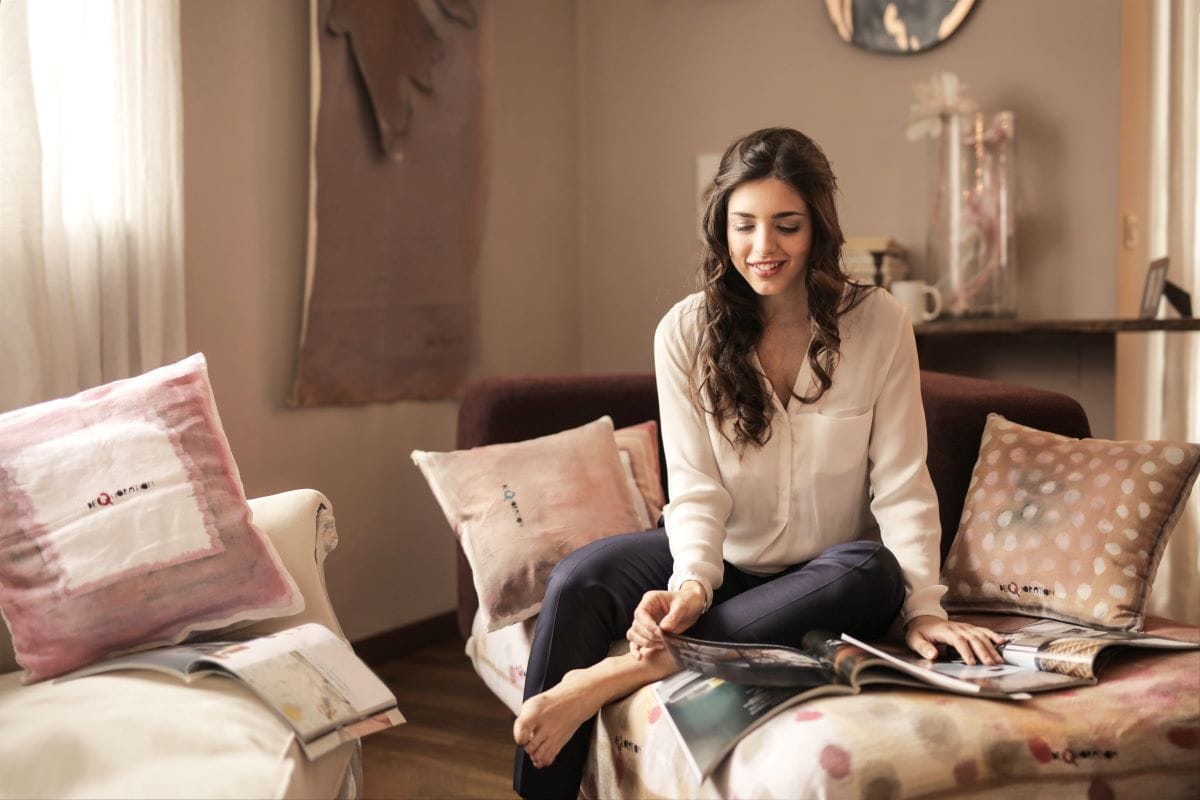
Key Considerations for Mixing Styles
Successfully merging modern and antique furniture requires careful consideration of several key elements. From color palettes to balance and functionality, each aspect plays a vital role in achieving a harmonious and visually pleasing design.
Color Palettes and Patterns
- Harmonious Hues: Begin by selecting a cohesive color palette that unites the contrasting styles. Neutral colors often serve as an excellent backdrop, allowing the furniture pieces to shine.
- Accent Colors: Introduce accent colors from antique pieces into your modern furniture or vice versa to create a visual bridge between eras.
- Pattern Play: Experiment with patterns, but maintain balance. Mixing patterns can add depth and character to your design but avoid overwhelming the space.
Balance and Proportion
- Visual Balance: Achieve equilibrium by distributing furniture and decor evenly throughout the space. Ensure that no single era dominates the room.
- Proportion Matters: Pay attention to the scale and proportion of each piece. Avoid placing oversized modern furniture next to delicate antique pieces.
- Symmetry vs. Asymmetry: Both symmetrical and asymmetrical arrangements can work well. Symmetry provides a sense of order, while asymmetry adds intrigue.
Focal Points and Contrast
- Selecting Focal Points: Identify key focal points in the room. These could be antique statement pieces or eye-catching modern art.
- Contrasting Elements: Use contrast strategically to highlight focal points. For instance, pair a sleek, modern sofa with an ornate antique mirror to create visual drama.
- Lighting Matters: Lighting plays a crucial role in emphasizing focal points. Choose lighting fixtures that complement your furniture choices.
Functionality and Comfort
- Function First: While aesthetics are important, ensure that the furniture serves its intended purpose. Comfort and functionality should never be sacrificed for style.
- Ergonomics: Pay attention to ergonomic design, especially with seating and tables. Comfortable modern chairs can work harmoniously with antique dining tables.
- Versatility: Seek versatile pieces that can adapt to changing needs. Modular modern furniture often excels in this regard.
By keeping these considerations in mind, you’ll navigate the intricacies of blending modern and antique furniture with finesse.
Read More: 8 Perfect Patio Dining Furniture Sets and Accent Pieces to Brighten Your Backyard
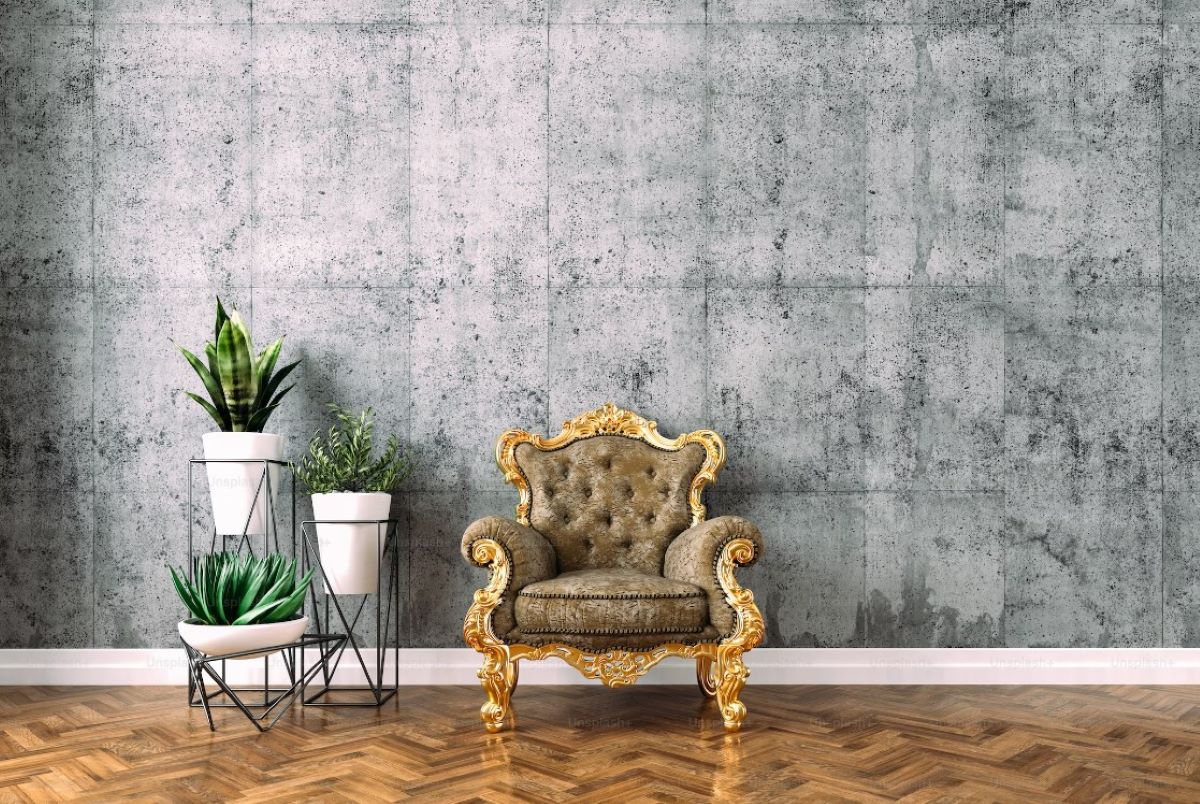
Practical Tips for Combining Styles
Mixing modern and antique furniture is an art that requires a delicate balance between the old and the new. Here, we offer practical tips and insights to help you seamlessly integrate these contrasting styles, ensuring that your living space exudes charm, character, and functionality.
Start with a Neutral Base
- Neutral Walls: Begin with a neutral wall color. Light grays, soft beiges, or muted whites create a versatile backdrop that allows both modern and antique pieces to shine.
- Flooring: If possible, opt for neutral flooring materials like hardwood or neutral-toned carpets. This provides a cohesive foundation for your eclectic design.
Use Antique Pieces as Statement Pieces
- Select Key Antiques: Choose a few standout antique pieces as focal points in the room. It could be a vintage cabinet, an intricately carved mirror, or an heirloom piece with sentimental value.
- Strategic Placement: Position antique pieces where they draw attention and become conversation starters. They should command the spotlight in your design.
Mix and Match Accessories
- Textiles: Mix modern upholstery with antique textiles like vintage rugs or embroidered cushions. This brings warmth and texture to your space.
- Decor Elements: Combine modern and antique decor elements such as vases, sculptures, or decorative items. These subtle touches tie the styles together.
Experiment with Different Eras
- Eclectic Approach: Don’t limit yourself to one specific era. Mixing pieces from various periods can create a more eclectic and visually engaging space.
- Layering: Experiment with layering, such as placing an antique coffee table on a modern area rug or draping a contemporary throw over an antique sofa.
Maintain Consistency
- Consistent Design Elements: While blending styles, maintain consistency in design elements like hardware finishes, wood tones, or metal accents to create cohesion.
- Personal Style: Infuse your personal style into the mix. Let your preferences guide your choices, ensuring that your living space reflects who you are.
Remember, the key to a successful fusion of modern and antique furniture is to create a space that not only looks visually appealing but also feels comfortable and functional.
Read More: 21 Amazing Summer Home Decor Products To Spruce Up Your Living Space

Room-by-Room Guide
The art of blending modern and antique furniture isn’t confined to one particular room. Whether it’s your living room, dining area, or bedroom, this design approach can be applied throughout your home. Let’s explore how to create a seamless fusion of styles in various living spaces.
Living Room
- Combining Sofas and Coffee Tables: Pair a contemporary sofa with an antique coffee table to create a captivating centerpiece. The contrast between sleek upholstery and vintage woodwork can be visually striking.
- Blending Lighting Fixtures: Integrate modern lighting fixtures like pendant lights or floor lamps to illuminate your space while maintaining the overall design harmony.
Dining Room
- Mixing Dining Tables and Chairs: Combine a modern dining table with antique chairs or vice versa. This juxtaposition can infuse character into your dining area.
- Incorporating Antique China or Glassware: Showcase antique china or glassware in modern cabinets or on open shelving. It not only adds elegance but also sparks conversations during meals.
Bedroom
- Combining Modern Bedframes and Antique Dressers: Opt for a contemporary bedframe and pair it with an antique dresser or vanity. This arrangement offers a balanced blend of function and style.
- Adding Vintage Decor Elements: Incorporate vintage decor elements like antique mirrors, bedside tables, or vintage-inspired textiles to infuse your bedroom with charm and character.
By applying these principles to different rooms in your home, you’ll create a cohesive yet eclectic living space that tells a unique design story.
Read More: 9 Astonishing Entry Decoration Ideas to Transform Your Foyer & Create a Functional Entryway

Caring for Antique Furniture
Antique furniture holds not only historical and aesthetic value but also requires special care to ensure its longevity and preservation. To maintain the beauty and integrity of your curated pieces, consider the following maintenance and restoration tips.
Maintenance and Preservation Tips
- Dust Regularly: Dust antique furniture with a soft, lint-free cloth. Avoid using abrasive materials that could scratch delicate surfaces.
- Humidity Control: Maintain a consistent humidity level in the room where your antiques are placed. Extreme fluctuations in humidity can damage wood and finishes.
- Sunlight Protection: Position antique furniture away from direct sunlight to prevent fading and damage to wood and upholstery.
- Use Coasters and Mats: Place coasters or mats under objects to protect surfaces from heat, moisture, and scratches.
- Avoid Harsh Cleaners: Use gentle, non-abrasive cleaners suitable for wood and upholstery when cleaning antique pieces. Always test in an inconspicuous area first.
When to Seek Professional Restoration
- Structural Damage: If you notice loose joints, cracks, or wobbly legs, consult a professional restorer to address structural issues.
- Surface Damage: Scratches, water rings, or worn finishes can often be remedied by a skilled furniture restorer who can refinish or repair damaged areas.
- Upholstery Care: Damaged or deteriorating upholstery should be attended to by experts who specialize in antique furniture reupholstery.
- Woodworm Infestations: If you suspect woodworm infestations, consult a pest control specialist immediately to prevent further damage.
- Maintain Records: Keep records of any restoration work performed, as this can add to the provenance and value of your antique furniture.
By following these maintenance tips and seeking professional assistance when necessary, you can ensure that your antique furniture remains in excellent condition, allowing you to enjoy its beauty for years to come.
Read More: Polywood Table: Affordable & Durable Furniture Solutions for Designing Your Outdoor Patio Sanctuary With Style
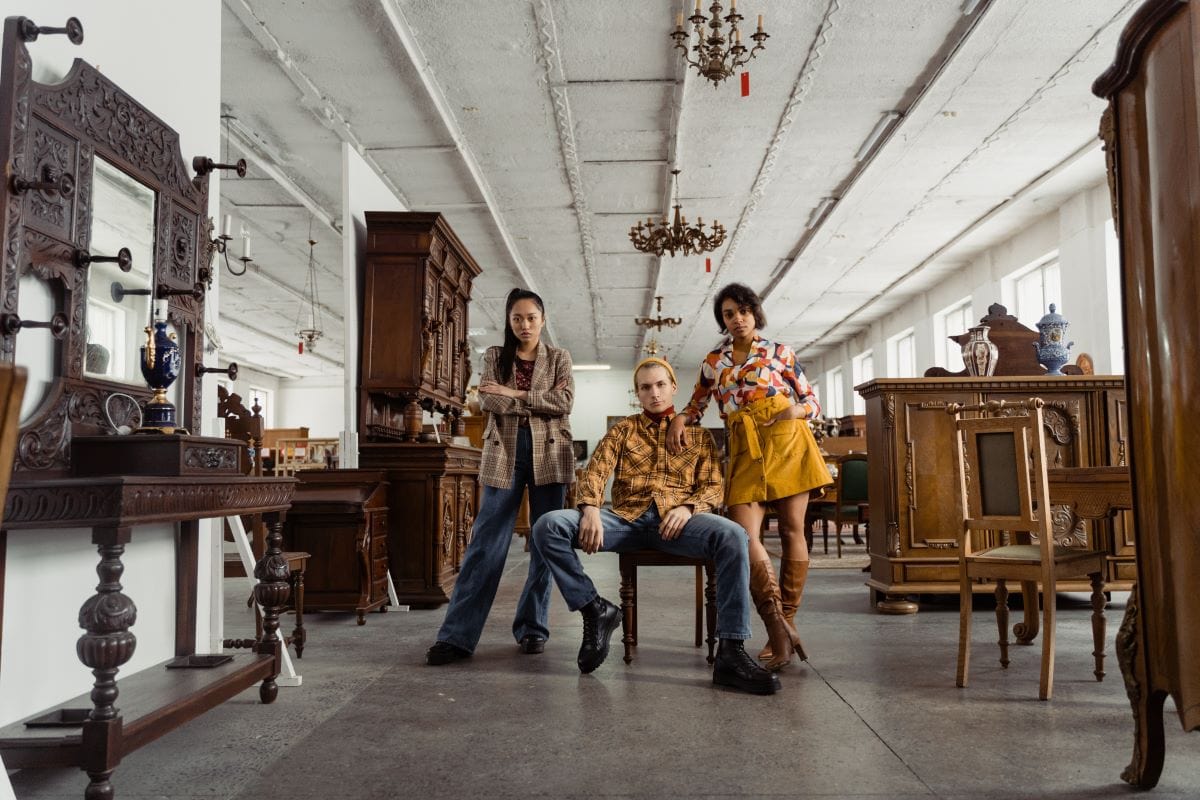
Where to Find Modern and Antique Pieces
Embarking on your journey to blend modern and antique furniture requires access to a diverse range of pieces. Fortunately, there are several avenues where you can discover both modern and antique treasures to complete your design vision.
Antique Shops and Markets
- Local Antique Shops: Explore your local area for antique shops and boutiques. These establishments often have unique, curated collections with pieces that carry a sense of history.
- Antique Markets and Fairs: Attend antique markets and fairs in your region. These events offer a wide variety of antique furniture, from rare finds to more affordable options.
- Auctions: Keep an eye on local and online auctions. Auctions can be an exciting way to acquire unique antique pieces with potential for great value.
Online Marketplaces
- Online Antique Retailers: Many antique dealers have online stores, offering a vast selection of antique furniture. These platforms often provide detailed descriptions and images.
- Marketplace Websites: Explore popular online marketplaces that allow individuals to buy and sell furniture, both modern and antique. Be sure to verify the authenticity of antique pieces.
- Social Media: Follow antique dealers and collectors on social media platforms. They may showcase their inventory and announce sales or auctions.
Custom Furniture Options
- Local Artisans: Connect with local artisans and craftsmen who can create custom furniture pieces that blend modern and antique elements to your specifications.
- Design Studios: Consider design studios that specialize in bespoke furniture. They can collaborate with you to bring your unique vision to life.
- Online Custom Furniture Services: Some online platforms allow you to design custom furniture pieces. You can tailor these to seamlessly fit your design concept.
Remember that the thrill of the hunt is part of the charm when seeking modern and antique furniture. Take your time to explore various sources and gather pieces that resonate with your personal style and vision for your living space.
Read More: 5 Furniture & Decor Options for Your Kid’s Bedroom Update
When it comes to interior design, the art of blending modern and antique furniture is a testament to the power of contrast, creativity, and storytelling. The allure of mixing modern and antique furniture is grounded in its ability to create something truly unique—a living space that reflects your individuality, celebrates history, and champions sustainability. By carefully considering color palettes, balance, and functionality, you can weave a narrative that effortlessly unites different eras and styles.
In blending modern and antique furniture, you create more than just an aesthetically pleasing living space; you craft a story—a narrative that speaks to your appreciation for history, your commitment to sustainability, and your love for design. This fusion of old and new is a testament to your creativity and the limitless possibilities of interior design.
Let your living spaces become canvases for the fusion of styles, eras, and stories. With the right balance, consideration, and a touch of your personal flair, you can transform your home into a captivating masterpiece, where modernity and antiquity coexist in perfect harmony.
WANT TO READ MORE?
Check out Daily Mom’s Home section for more tips and tricks!
CONNECT WITH DAILY MOM
💖 NEWSLETTER: DAILY READS IN YOUR INBOX 💖
Sign up to receive our picks for the best things to do, see and buy so you can relax and focus on more important tasks! Let us help you be the best version of yourself you can be!
BE SOCIAL WITH US
📌 LOVE IT? PIN IT!📌
